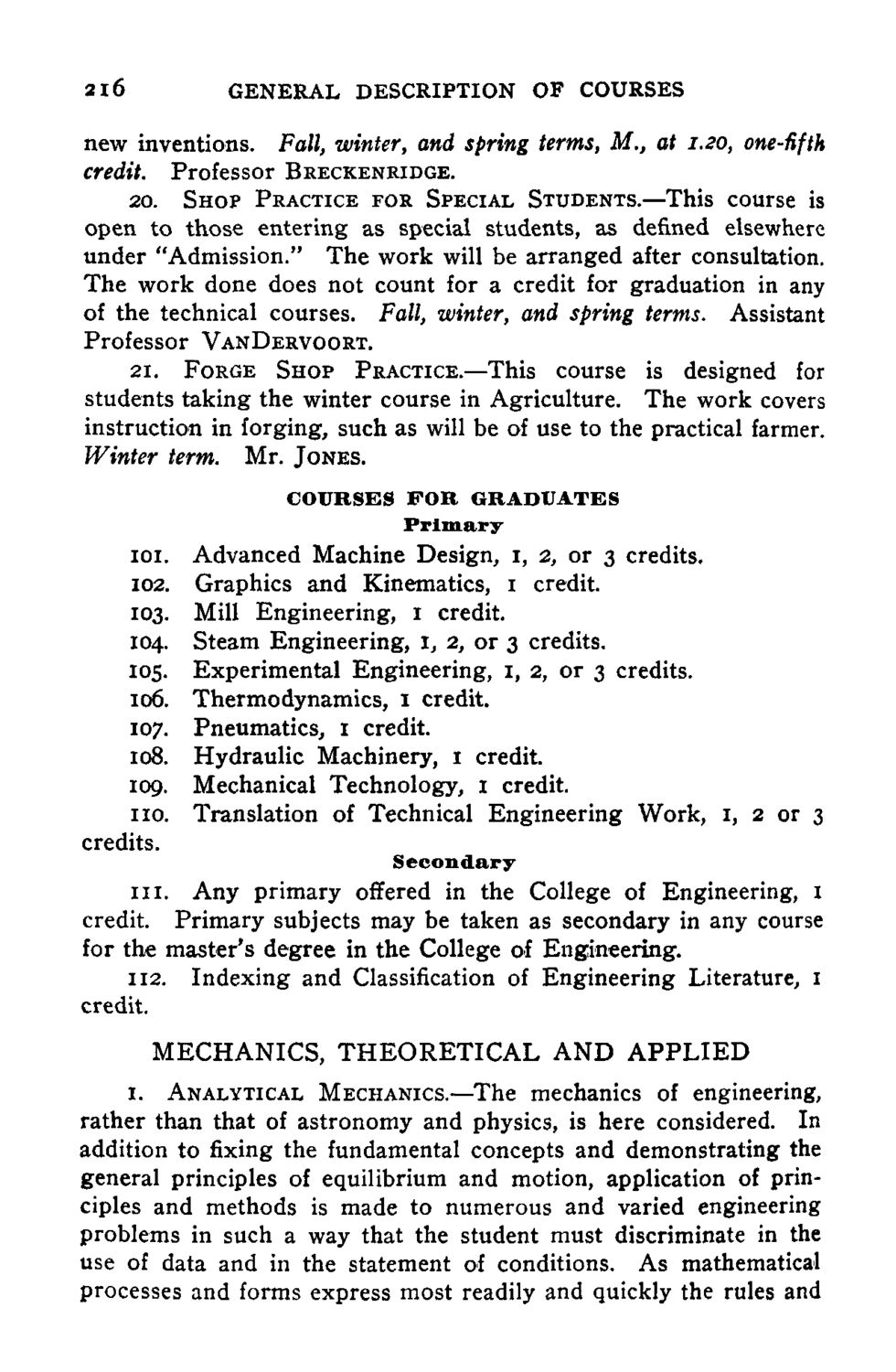Caption: Course Catalog - 1897-1898
This is a reduced-resolution page image for fast online browsing.

EXTRACTED TEXT FROM PAGE:
2l6 GENERAL DESCRIPTION OF COURSES new inventions. Fall, winter, and spring terms, M., at i.so, one-fifth credit. Professor BRECKENRIDGE. 20. SHOP PRACTICE FOR SPECIAL STUDENTS.—This course is open to those entering as special students, as denned elsewhere under "Admission." The work will be arranged after consultation. The work done does not count for a credit for graduation in any of the technical courses. Fall, winter, and spring terms. Assistant Professor VANDERVOORT. 21. FORGE SHOP PRACTICE.—This course is designed for students taking the winter course in Agriculture. The work covers instruction in forging, such as will be of use to the practical farmer. Winter term. Mr. JONES. COURSES FOR GRADUATES Primary 101. 102. 103. 104. 105. 106. 107. 108. 109. no. credits. Advanced Machine Design, I, 2, or 3 credits. Graphics and Kinematics, 1 credit. Mill Engineering, 1 credit. Steam Engineering, I, 2, or 3 credits. Experimental Engineering, 1, 2, or 3 credits. Thermodynamics, I credit. Pneumatics, 1 credit. Hydraulic Machinery, 1 credit. Mechanical Technology, 1 credit. Translation of Technical Engineering Work, 1, 2 or 3 Secondary i n . Any primary offered in the College of Engineering, I credit. Primary subjects may be taken as secondary in any course for the master's degree in the College of Engineering. 112. Indexing and Classification of Engineering Literature, 1 credit. MECHANICS, THEORETICAL AND APPLIED 1. ANALYTICAL MECHANICS.—The mechanics of engineering, rather than that of astronomy and physics, is here considered. In addition to fixing the fundamental concepts and demonstrating the general principles of equilibrium and motion, application of principles and methods is made to numerous and varied engineering problems in such a way that the student must discriminate in the use of data and in the statement of conditions. As mathematical processes and forms express most readily and quickly the rules and
|